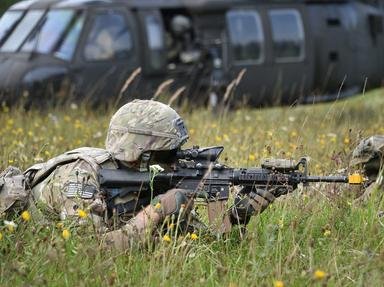Quiz Answer Key and Fun Facts
1. Prior to their employment as bodyguards to the pontiff, Swiss mercenary soldiers were providing protection for which king of France from as early as 1480?
2. Which pope, who shared his name with an earlier Roman leader and who had earned himself the sobriquet the 'Warrior Pope' due to his war-like exploits as a cardinal, founded the Pontifical Swiss Guard in 1506?
3. The Swiss Guard's first major military engagement took place in the defence of Pope Clement VII. In which conflict between the Holy Roman Empire and an alliance of independent states did this engagement take place?
4. An image in relief of which tree, native to Europe and an emblem of the family of the founder of the guard, is displayed on each side of the Swiss Guard ceremonial steel helmet?
5. The colourful renaissance style ceremonial uniform as it is worn today represents the colours of which powerful family of the Renaissance?
6. New recruits to the Pontifical Swiss Guard swear their oath of loyalty to the papacy on the 6th of May each year in a solemn ceremony. Which event, significant to the Swiss Guard, is commemorated by this date?
7. The right to provide which service to the Swiss Guard was awarded to the Conservatory for Beggar Girls by Pope Clement IX?
8. The first members of the Swiss Guard could be considered mercenary soldiers; which word was used to describe the German mercenary soldiers of the fifteenth and sixteenth centuries against whom the Swiss Guard had opposed on occasion?
9. What is the name given to the specific style of steel helmet worn by members of the Swiss Guard on ceremonial occasions?
10. Which Renaissance artist is mainly credited with influencing the design of the Swiss Guard's modern ceremonial Gala uniform?
Source: Author
SisterSeagull
This quiz was reviewed by FunTrivia editor
stedman before going online.
Any errors found in FunTrivia content are routinely corrected through our feedback system.
